
Computer animation is the process used for digitally generating moving images. The more general term computer-generated imagery (CGI) encompasses both still images and moving images, while computer animation only refers to moving images. Modern computer animation usually uses 3D computer graphics.

Astro Boy, known in Japan by its original name Mighty Atom, is a Japanese manga series written and illustrated by Osamu Tezuka. It was serialized in Kobunsha's Shōnen from 1952 to 1968. The 112 chapters were collected into 23 tankōbon volumes by Akita Shoten. Dark Horse Comics published an English translation in 2002. The story follows Astro Boy, an android young boy with human emotions who is created by Umataro Tenma after the recent death of his son Tobio. Eventually, Astro is sold to a robot circus run by Hamegg, but is saved from his servitude by Professor Ochanomizu. Astro becomes a surrogate son to Ochanomizu who creates a robotic family for Astro and helps him to live a normal life like an average human boy, while accompanying him on adventures.
The history of anime can be traced back to the start of the 20th century, with the earliest verifiable films dating from 1917. Before the advent of film, Japan already had a rich tradition of entertainment with colourful painted figures moving across the projection screen in utsushi-e (写し絵), a particular Japanese type of magic lantern show popular in the 19th century. Possibly inspired by European phantasmagoria shows, utsushi-e showmen used mechanical slides and developed lightweight wooden projectors (furo) that were handheld so that several performers could each control the motions of different projected figures.
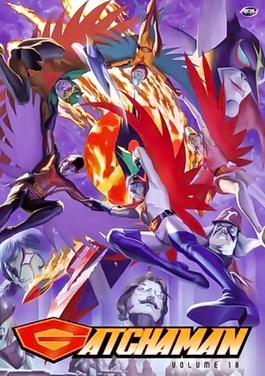
Science Ninja Team Gatchaman is a Japanese animated franchise about a five-member superhero ninja team created by Tatsuo Yoshida and produced by Tatsunoko Productions. The original anime series, which debuted in 1972, was eponymously entitled Kagaku Ninja-tai Gatchaman and is best known in the English-speaking world as the adaptation entitled Battle of the Planets (1978). The series had additional English adaptations with G-Force: Guardians of Space (1986) and 2005 ADV Films uncut release. Tatsunoko also uses the official translation Science Commando Gatchaman in related products and media.

Tetsujin 28-gō, known as simply Tetsujin 28 in international releases, is a 1956 manga written and illustrated by Mitsuteru Yokoyama, who also created Giant Robo. The series centers on the adventures of a young boy named Shotaro Kaneda, who controls a giant robot named Tetsujin 28, built by his late father.
Sony Pictures Animation Inc. is an American animation studio owned by Sony Entertainment's Sony Pictures Entertainment through their Motion Picture Group division and founded on May 9, 2002. Most of the studio's films are distributed worldwide by Sony Pictures Releasing under their Columbia Pictures label, while direct-to-video releases are released by Sony Pictures Home Entertainment.

Astro Boy, known in Japan and Pluto as Atom, is a superhero and the protagonist of the eponymous franchise. Created by Osamu Tezuka, the character was introduced in the 1951 Captain Atom manga. Astro Boy has appeared in animated television shows and feature film adaptations of its eponymous manga, as well as a live-action TV series, other works by Tezuka, and video games.

ImageMovers, L.L.C. (IM), is an American production company which produces CGI animation, motion-capture, live-action films and television shows. The company is known for producing such films as Cast Away (2000), What Lies Beneath (2000), The Polar Express (2004), Monster House (2006), and Beowulf (2007). From 2007 to 2011, The Walt Disney Company and ImageMovers founded a joint venture animation facility known as ImageMovers Digital which produced two motion-captured CGI-animated films: A Christmas Carol (2009) and Mars Needs Moms (2011) for Walt Disney Pictures, neither of which were financially successful.

John Russell Dilworth is an American animator, actor, writer, director, storyboard artist, producer and the creator of the animated television series Courage the Cowardly Dog. His work has mainly appeared on PBS, CBS, Showtime, HBO, Fox, ABC, NBC, Arte, CBC Television, YTV, Teletoon, BBC Two, Cartoon Network, Nickelodeon, Comedy Central and MTV, among others.

Astro Boy, sometimes referred to as New Mighty Atom, is a color remake of the 1960s anime black-and-white series of the same name, both series are adapted from the manga series by Osamu Tezuka.

TMNT is a 2007 animated superhero film written and directed by Kevin Munroe in his feature directorial debut. It is the fourth theatrical Teenage Mutant Ninja Turtles film. The first animated film in the franchise, it features an ensemble voice cast including Chris Evans, Sarah Michelle Gellar, Mako, Kevin Smith, Patrick Stewart, and Ziyi Zhang with narration by Laurence Fishburne. In the film, after having grown apart following the final defeat of their arch-enemy, the Shredder, the four Turtles — Leonardo, Raphael, Donatello, and Michelangelo — are set to reunite and overcome their faults to save the world from evil ancient creatures.
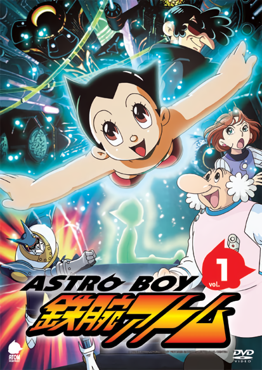
Astro Boy is a Japanese anime television series, based on Osamu Tezuka's manga series of the same name. Produced by Tezuka Productions, Sony Pictures Entertainment Japan, Animax, Dentsu, and Fuji TV, it was directed by Kazuya Konaka, with Marc Handler as the story editor, Shinji Seya designing the characters, Shinji Aramaki and Takeshi Takakura designing the mechanical elements, Keiichirō Mochizuki serving as chief animation director, and Takashi Yoshimatsu composing the music.
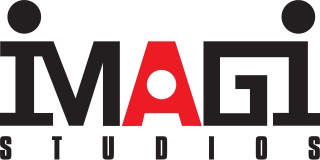
Imagi Animation Studios, also known as Imagi Studios, was a Chinese animation and visual effects studio based in Hong Kong, and established in 2000 by Imagi International Holdings Limited, a Hong Kong-based investment company.

Astro Boy is a Japanese television series that premiered on Fuji TV on New Year's Day, 1963, and is the first popular animated Japanese television series that embodied the aesthetic that later became familiar worldwide as anime. It originated as a manga of the same name in 1952 by Osamu Tezuka, revered in Japan as the "God of Manga". It lasted for four seasons, with a total of 193 episodes, the final episode presented on a Saturday, New Year's Eve 1966.

The Original Astro Boy is a twenty-issue 1980s comic book series by NOW Comics, based on the original Japanese Mighty Atom series by Osamu Tezuka. The series was based mostly on the 1963 Astro Boy anime series, but began to include elements from the 1980 series in later issues. The comic went through three writers and artists, and embellished the original plotline, despite only covering the first episode of the 1963 series.

David Bowers is an English animator, storyboard artist, film director, screenwriter and voice actor.
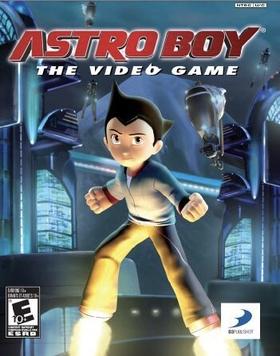
Astro Boy: The Video Game is an action platform video game based on the 2009 CGI-animated film of the same name. The game was released in Japan on October 8, 2009 for the PlayStation Portable under the name Atom to coincide with the Japanese theatrical release on October 10, 2009. It was later released on the same system as a downloadable game in North America on October 14, 2009. It received a retail version of it and a port to the PlayStation 2, Wii and Nintendo DS which were released on October 20, 2009 to coincide with the North American theatrical release of the film on October 23, 2009. It features the voices of Freddie Highmore and Kristen Bell, reprising their film roles.
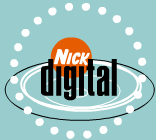
Nickelodeon Digital, often shortened to Nick Digital and originally known as Nickelodeon Creative Labs, is an American animation studio based in New York City which opened in 1994. It is a division of Nickelodeon Animation Studio. Nickelodeon Digital produces some of Nickelodeon's animated series and creates digital content and motion graphics for the Nickelodeon Group. The company's Burbank, California branch creates CGI and visual effects for Nickelodeon's animated series.

Blur Studio Inc. is an American production company which specialises in CGI visual effects, CGI animation and CGI design. Located in Culver City, California, the studio has produced CGI-animated films, teasers and ad spots for television, as well as video-game CGI cinematics.



















